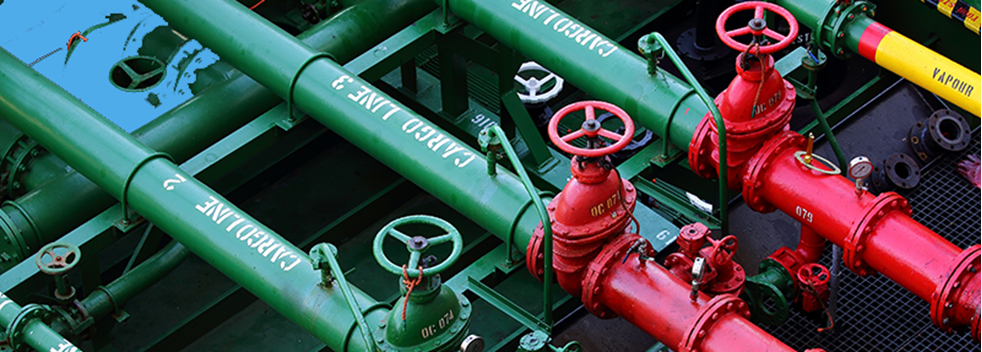Introduction
The quality of bunkers is very important for a ship to ensure safe operation of the main engine, and to comply with MARPOL Annex VI on stricter sulphur content regulations. Bad bunkers are detrimental to engines, and can cause disputes between owner and charterers. It can also lead to Port State Control detentions and huge fines by Authorities.
Disputes as to the quality of bunkers will arise between owners and charterers particularly under time charters. Bunker suppliers and intermediaries (e.g. such as bunker brokers) may also be involved.
Claims for off-spec bunkers can be complicated and can give rise to significant legal liabilities involving damage to the engines, as well as claims for loss of use of the vessel while it is being repaired. Off-spec bunker claims also invariably require instructing experts and lawyers, resulting in significant costs being incurred.
The bunker samples provide vital evidence to support claims against suppliers and to provide protection when facing Port State Control. It is important for the master to retain the bunker samples onboard to determine the quality specification and to demonstrate compliance with Annex VI bunker sulphur limits.
Standard and requirement
MARPOL Annex VI requires representative bunker samples to be taken and retained on board. Resolution MEPC.182(59) "2009 Guidelines for the sampling of fuel oil for determination of compliance with the revised MARPOL Annex VI" provide the details of the sampling, storage and documentation requirements.
Retained sample storage
- The retained sample should be kept in a safe storage location, outside the ship's accommodation, where personnel would not be exposed to vapours which may be released from the sample. Care should be exercised when entering a sample storage location.
- The retained sample should be stored in a sheltered location where it will not be subject to elevated temperatures, preferably at a cool/ambient temperature, and where it will not be exposed to direct sunlight.
- Pursuant to regulation 18(6) of Annex VI of MARPOL 73/78, the retained sample should be retained under the ship's control until the fuel oil is substantially consumed, but in any case, for a period of not less than 12 months from the time of delivery.
- The ship's master should develop and maintain a system to keep track of the retained samples.
The DOC holder of the ship shall establish a sampling procedure in their Shipboard Safety Management System based on sound bunkering principles and MARPOL Annex VI resolution MEPC. 182 (59) as well as Industry Standards (ISO 13739), which covers the method of taking the sample, location and witnessing.
Location of storage
It is important to store the samples in a dry/cool place to preserve the labels and avoid vapour loss. Typically, a suitable storage location may be the steering flat, but the best practice is to store the bunker samples in the paint locker as the paint stores are protected by a fixed sprinkler system.
The samples should be kept in a steel cupboard. Some providers sell storage cabinets for MARPOL samples, and commercial samples can also be stored there.
Smoking, or the carriage of smoking materials in the storage room are prohibited. Special attention must be paid to the condition of the flame proof electrical fittings. Care should be exercised when entering a sample storage location.
Period of retained on board
Commercial samples should be retained for evidential purpose for a period of six months after completing consumption of the supply as by then you should know if you have any claims or not.
MARPOL samples must be retained on onboard until the fuel is substantially consumed, but in any event for a period of not less than 12 moths from the time of delivery.
Owners may check with the established testing companies who usually provide in their agreements that they will retain the remains of samples tested for around three months.
Sample label and log
IMO Resolution MEPC 182 (59) requires sample bottles to have a tamper proof security seal with a unique means of identification and a label containing following information:
- location at which, and the method by which, the sample was drawn;
- date of commencement of delivery;
- name of bunker tanker/bunker installation;
- name and IMO number of the receiving ship;
- signatures and names of the supplier's representative and the ship's representative;
- details of seal identification; and
- bunker grade.
A Bunker Fuel Sample Log Book to record sample details along with full instructions on sampling should be maintained by the ship. The log book enables the master to maintain a simple and effective tracking system for fuel oil samples held onboard.
All samples in storage, with date of bunkering, source of sample (taken by crew or supplier), seal number and when the time comes, date/place of disposal etc., should be recorded in the Bunker Fuel Sample Log Book.
Disposal and transfer of bunker samples
The expired samples retained onboard may need to be disposed regularly. The disposal of samples and samples containers should be conducted in compliance with MARPOL requirement and local environmental regulations.
The samples are normally disposed either at shore facilities by a sludge collection party or poured back into the fuel tank by crew. Please be reminded that the used empty plastic bottles of fuel samples should be cleaned before disposal. The disposal date should be indicated in the sample log book, and local regulations may require recording of method of disposal.
If a sample is to be delivered to a shore laboratory or Port State Control for analysis, it is important to secure a record of the sample custody transfer. The transfer should be recorded in the sample log with the BDN, with specific reference to:
- the sample label details and seal number;
- the port, date and time of handover of the sample;
- the identity of the person to whom the sample was handed, together with the name, signature and authority stamp as appropriate;
- contact details of those who will hold the sample.
